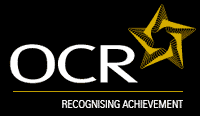iTQ Unit 82: Website Software level 3
Unit purpose and aim
This is the ability to use a software application designed for planning, designing and building websites.
This unit is about the skills and knowledge required by an IT user to select and use a range of advanced of website software tools and techniques to develop multiple-page websites with multimedia and interactive features.
Website software techniques will be described as ‘advanced’ because:
- the software tools and functions used will be complex and at times involve having the idea that there may be a tool or function to do something (eg improve efficiency or create an effect), exploring technical support, self-teaching and applying;
- the development techniques will be complex, and will involve research, identification and application; and
- the user will take full responsibility for planning and developing the structure, inputting, manipulating, adding multimedia or interactive features, uploading and publishing the information.
Learning Outcomes |
Assessment Criteria |
Knowledge, understanding & skills |
1. Create structures and styles and use them to produce websites |
1.1 Determine what website content and layout will be needed for each page and for the site 1.2 Plan and create web page templates to layout content 1.3 Select and use website features and structures to enhance website navigation and functionality 1.4 Create, select and use styles to enhance website consistency and readability 1.5 Provide guidance on laws, guidelines and constraints that affect the content and use of websites 1.6 Explain what access issues may need to be taken into account 1.7 Explain when and why to use different file types for saving content 1.8 Store and retrieve files effectively, in line with local guidelines and conventions where available |
Content and layout: Website access issues: File types: |
2. Select and use website software tools and features to develop multiple page websites with multimedia and interactive features |
2.1 Prepare content for web pages so that it is ready for editing and formatting 2.2 Organise and combine information needed for web pages in line with any copyright constraints, including across different software 2.3 Select and use appropriate editing and formatting techniques to aid meaning 2.4 Select and use appropriate programming and development techniques to add features and enhance websites 2.5 Select and use file formats that make information easier to download 2.6 Check web pages meet needs, using IT tools and making corrections as necessary and/or video; numbers with charts and graphs; text alignment, captions, text wrap; behind, in front, grouping |
Combine information: Programming and |
3. Publish and test multiple page websites with multimedia and interactive features |
3.1 Select and use appropriate testing methods to check that all elements and features of complex websites are working as planned 3.2 Identify any quality problems with websites and explain how to respond to them 3.3 Select and use an appropriate programme to upload and publish the website and make sure that it 3.4 Respond appropriately to quality problems with websites to ensure outcomes are fit for purpose |
Testing methods: |
Details of relationship between the unit and national occupational standards
This unit maps fully to competences outlined in IT User National Occupational Standards version 3 (2009).
Assessment
All ITQ units may be assessed using any method, or combination of methods, which clearly demonstrates that the learning outcomes and assessment criteria have been met. Assessments must also take into account the additional information provided in the unit Purpose and Aims relating to the level of demand of:
- The activity, task, problem or question and the context in which it is set;
- The information input and output type and structure involved; and
- The IT tools, techniques or functions to be used.
See Recommended Assessment Methods in the ITQ Centre Handbook.
Evidence requirements
Where candidates are not using CLAiT Unit 1 to produce evidence, an evidence checklist must be completed without gaps.
Guidance on assessment and evidence requirements
Please refer to the centre handbook for ITQ 2009.
